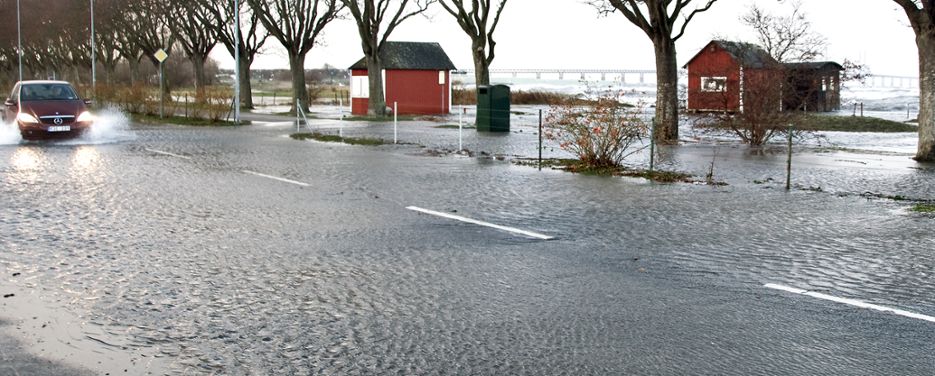Flooding means that water covers an area which is not normally under water. The underlying reasons vary depending on whether the flooding occurs along the coast, alongside watercourses, around lakes or in urban areas.
Lakes and watercourses
How the flood risk along watercourses and lakes will change depends on the part of the country it’s about. Roughly speaking, flooding caused by overflowing rivers and streams may become more common in large parts of Götaland, southern Svealand and northwesternmost Norrland, while the risk is expected to be lower in northern Svealand and the rest of Norrland. However, local variations are considerable.
The flood risk is also largely dependent on other factors, such as how watercourses are regulated, which preventive measures are taken, and how settlements and infrastructure develop and change.
Urban flooding
Extremely heavy rains in a short period of time can cause flash floods and significant problems in towns. There are many hard surfaces in urban areas such as streets, rooftops, parking lots that cannot adsorb any water, and thus convert huge amounts of water directly to stormwater conveyance systems.
The entire country is affected by downpours, although these are somewhat more common in the south. There is a lot of evidence to suggest that downpours will become more intense in the future. In a warmer climate, the atmosphere can hold more moisture and this creates conditions for more extreme precipitation. However, as in today’s climate, downpours will vary naturally.
Extensive preventive measures can enable towns to better deal with extreme precipitation.
Seas
Coastal flooding In the future, the flood risk along the coast will be affected by factors such as rising sea levels and land uplift. It is very likely that the sea level will rise for a long time to come. Land uplift means that the effect of rising sea levels will be less in the central and northern parts of Sweden where land uplift is greater, while southern Sweden will hardly benefit at all from land uplift since it is very small there.
The future risk of flooding along Sweden’s coast will largely depend, just as with lakes and watercourses, on which preventive measures are taken and as much on the future development of settlements and infrastructure in coastal areas.
